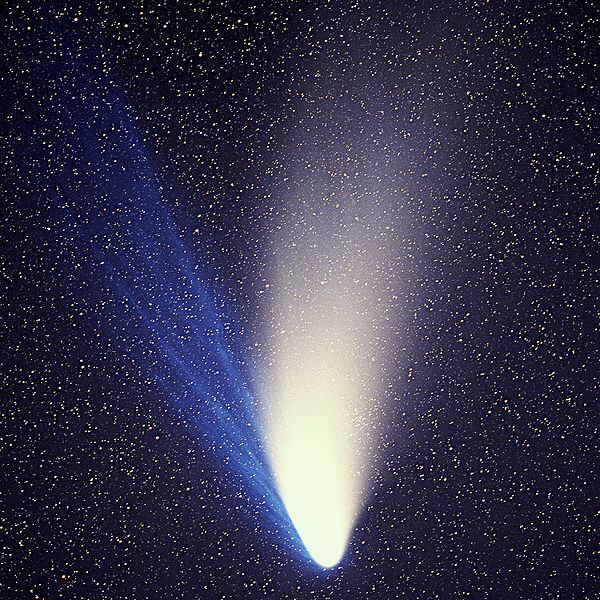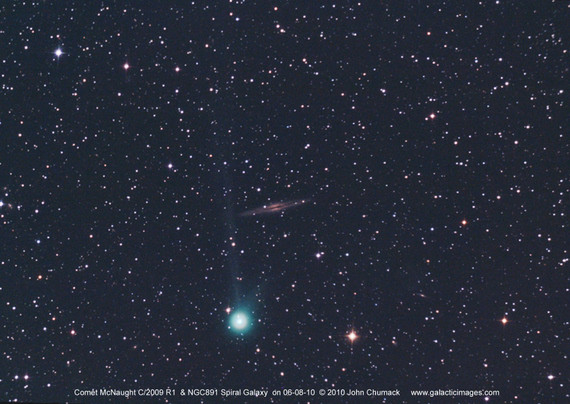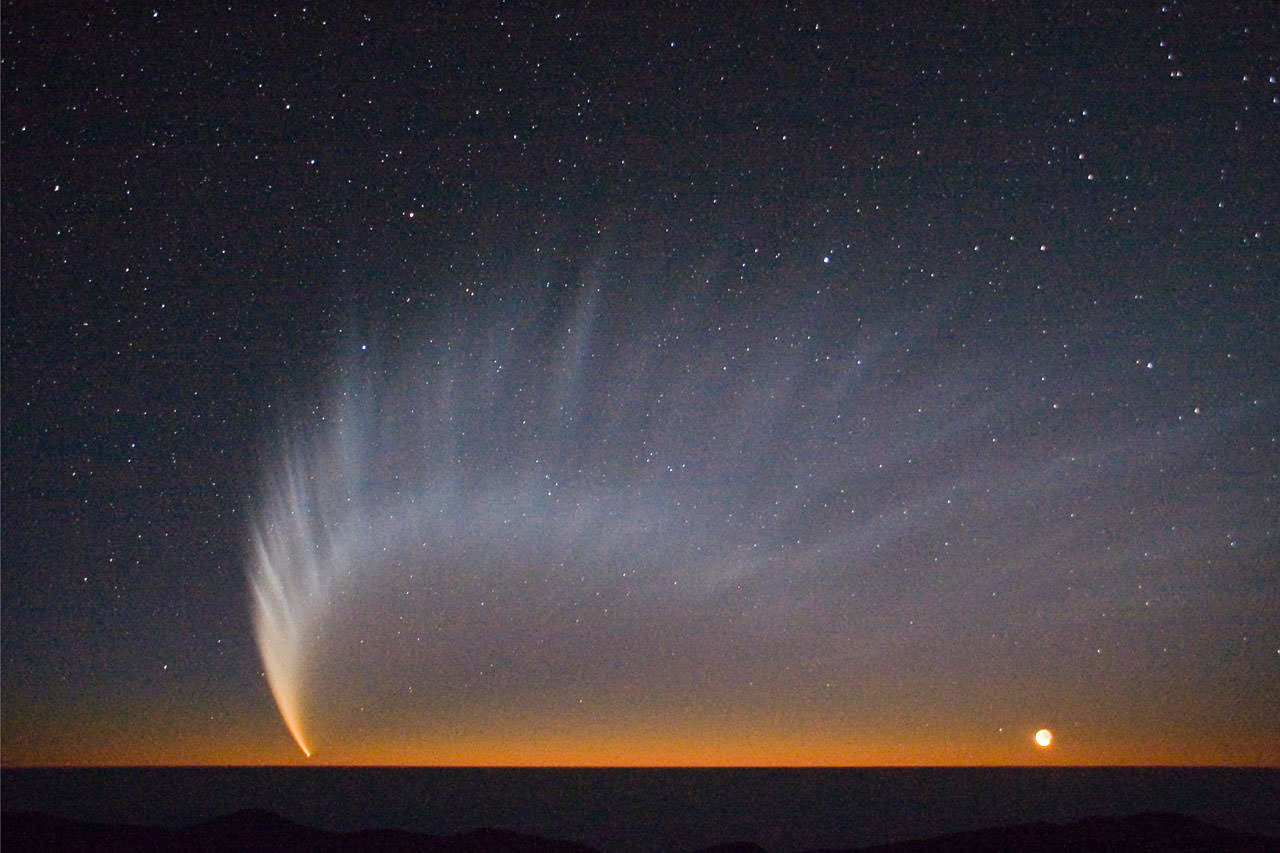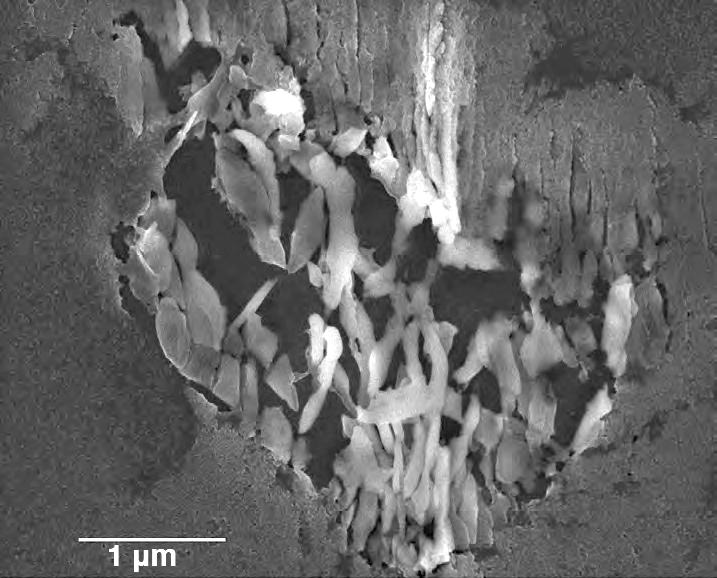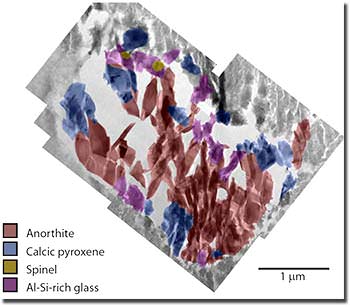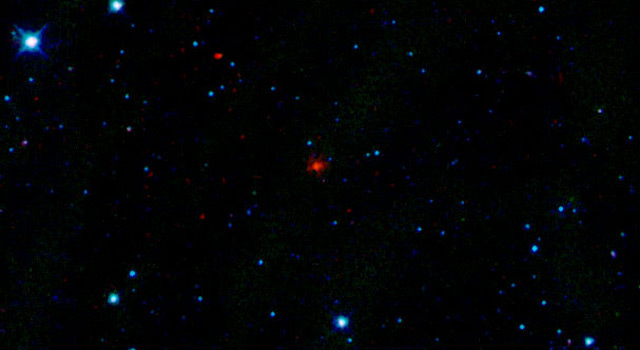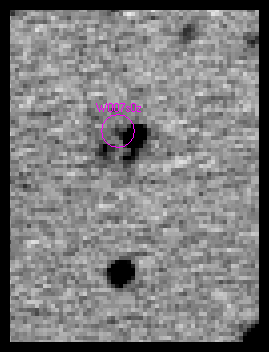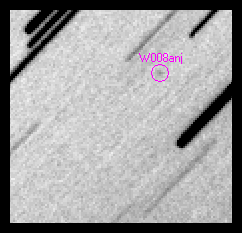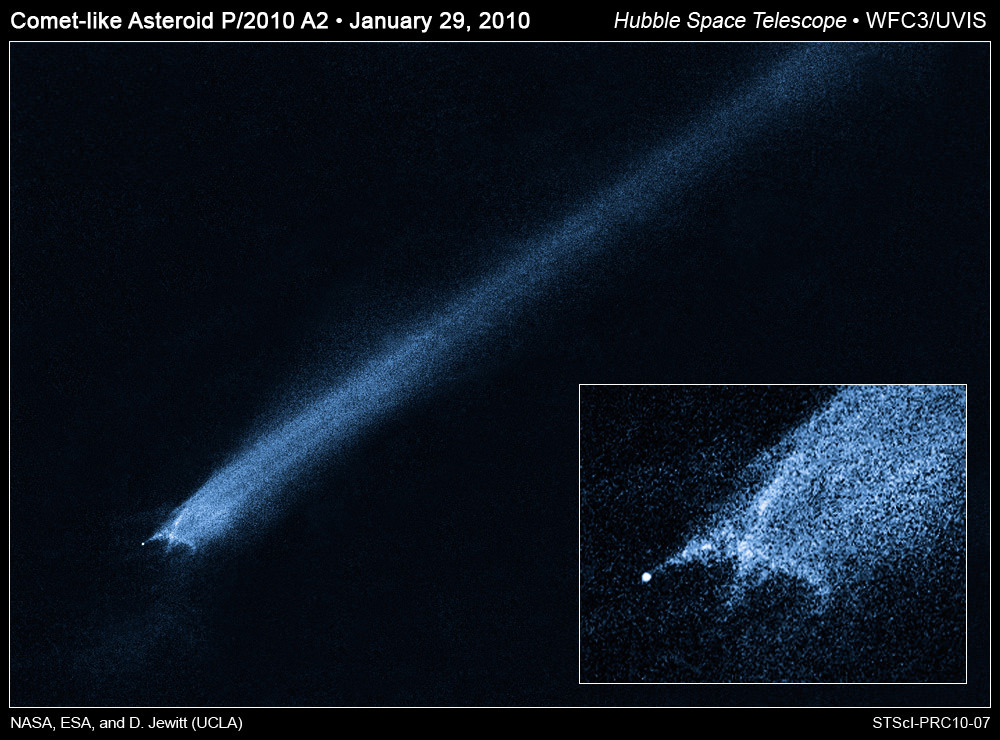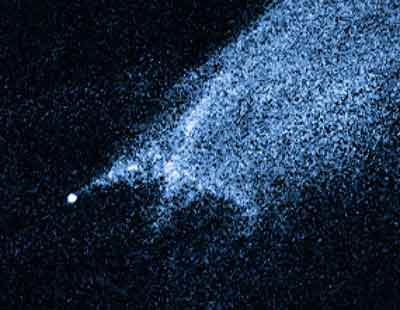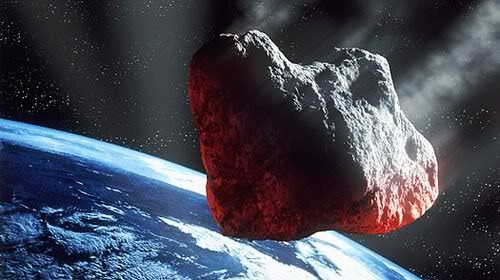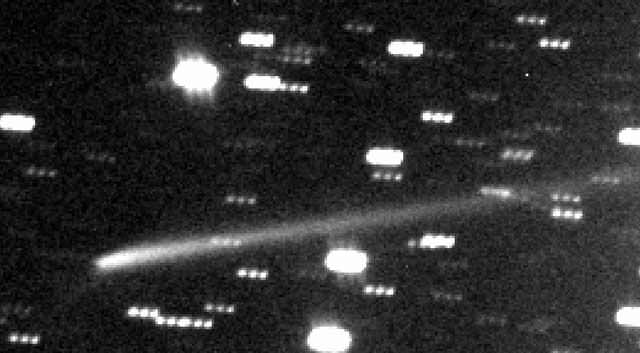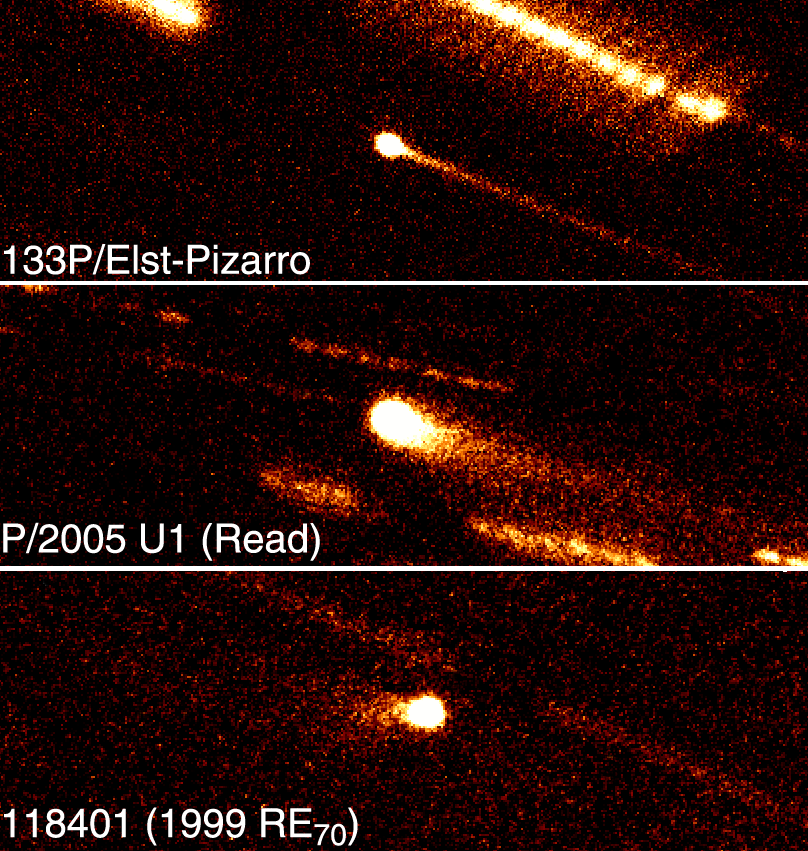[/caption]
Most comets are thought to have originated great distances away, traveling to the inner solar system from the Oort Cloud. But new computer simulations show that many comets – including some famous ones – came from even farther: they may have been born in other solar systems. Many of the most well known comets, including the Hale Bopp Comet (above), Halley, and, most recently, McNaught, may have formed around other stars and then were gravitationally captured by our Sun when it was still in its birth cluster. This new finding solves the mystery of how the Oort cloud formed and why it is so heavily populated with comets.
Comets are believed to be leftovers from the formation of the solar system. They are observed to come to the solar system from all directions, so astronomers have thought the comet’s origin was from the Oort Cloud, a giant sphere surrounding the solar system. Some comets travel over 100,000 AU, in a huge orbit around the sun.
But comets may have formed around other stars in the cluster where the sun was born and been captured gravitationally by our sun.
Dr. Hal Levison from the Southwest Research Insitutue, along with Dr. Martin Duncan from Queen’s University, Kingston, Canada, Dr. Ramon Brasser, Observatoire de la Côte d’Azur, France and Dr. David Kaufmann (SwRI) used computer simulations to show that the Sun may have captured small icy bodies from its sibling stars while still in its star-forming nursery cluster.
The researchers investigated what fraction of comets might be able to travel from the outer reaches of one star to the outer reaches of another. The simulations imply that a substantial number of comets can be captured through this mechanism, and that a large number of Oort cloud comets come from other stars. The results may explain why the number of comets in the Oort cloud is larger than models predict.
While the Sun currently has no companion stars, it is believed to have formed in a cluster containing hundreds of closely packed stars that were embedded in a dense cloud of gas. During this time, each star formed a large number of small icy bodies (comets) in a disk from which planets formed. Most of these comets were gravitationally slung out of these prenatal planetary systems by the newly forming giant planets, becoming tiny, free-floating members of the cluster.
The Sun’s cluster came to a violent end, however, when its gas was blown out by the hottest young stars. These new models show that the Sun then gravitationally captured a large cloud of comets as the cluster dispersed.
“When it was young, the Sun shared a lot of spit with its siblings, and we can see that stuff today,” said Levison.
“The process of capture is surprisingly efficient and leads to the exciting possibility that the cloud contains a potpourri that samples material from a large number of stellar siblings of the Sun,” said co-author Duncan.
Evidence for the team’s scenario comes from the roughly spherical cloud of comets, known as the Oort cloud, that surrounds the Sun, extending halfway to the nearest star. It has been commonly assumed this cloud formed from the Sun’s proto-planetary disk. However, because detailed models show that comets from the solar system produce a much more anemic cloud than observed, another source is required.
“If we assume that the Sun’s observed proto-planetary disk can be used to estimate the indigenous population of the Oort cloud, we can conclude that more than 90 percent of the observed Oort cloud comets have an extra-solar origin,” Levison said.
“The formation of the Oort cloud has been a mystery for over 60 years and our work likely solves this long-standing problem,” said Brasser.
“Capture of the Sun’s Oort Cloud from Stars in its Birth Cluster,” was published in the June 10 issue of Science Express.
Source: Southwest Research Institute

